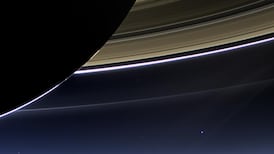The first observation of a star “nova” explosion by an international team of astronomers, including researchers at the Dublin Institute for Advance Studies (DIAS), has been reported in the journal Science.
"It's the first time that we've detected a nova at this high energy," says Dr Jonathan Mackey, who was part of the team that used specialist telescopes in Namibia to make the discovery.
In August 2021, Irish amateur astronomer Keith Geary was first to report an explosion in a star system called RS Ophiuchi 5,000 light years from Earth. Geary's sighting was followed up by Mackey and other DIAS astronomers who pointed an array of telescopes called the High Energy Stereoscopic System (HESS) towards the explosion.
“We are lucky that there’s a big network of amateur astronomers who found it quickly,” says Mackey. “We have this programme that whenever we get a trigger, we tell the people in Namibia, okay point the telescope, cancel what you are doing and look at his nova.”
The HESS, which was co-founded by DIAS and began in 2002, is located in an area of Namibia, near Gamsberg Mountain, known for its optical quality. It has five telescopes which measure powerful gamma ray bursts, which can occur from nova explosions. Some 260 scientists from 40 scientific institutions and 13 countries are involved in HESS.
Astronomers had been trying to observe nova explosions in real-time for many years, but they either occurred too far away to permit close detection, or were only recorded after the fact. The cosmic proximity of RS Ophiuchi and the size of this explosion facilitated this finding.
RS Ophiuchi is a binary star system, or two-star system, made up of a dense, small, Earth-sized star (white dwarf) beside a huge, luminous dying star (red giant). The two stars interact in such a way that a violent thermonuclear explosion occurs about every 15 years.
‘Blasted away’
“The white dwarf is constantly soaking in some gas from the red giant neighbour,” explains Mackey. “The separation of the two stars is about the same as the separation between the sun and the Earth.
“What we think happens is that each time there’s an explosion some of the material gets blasted away and some of stars on the white dwarf, and the white dwarf keeps getting heavier,” he adds. “Eventually it hits the Chandrasekhar limit, which is the maximum stable mass.”
A nova explosion produced by a star system like RS Ophiuchi is very different from a supernova blast. The latter is a once-off event, which obliterates the star, leaving just a black hole behind. A nova explosion, however, can be recurrent. RS Ophiuchi had exploded in 1967, 1985 and 2006, so astronomers knew it would explode again. Yet the 2021 explosion was colossal: big enough to be seen clearly by astronomers.
“It’s not really clear why, but this one was 10 times brighter than the other nova,” Mackey says. “The findings from this research will be key in helping us to understand how cosmic explosions work.”
Other DIAS scientists who were part of the team were Prof Felix Aharonian, Dr Robert Brose and Dr Davit Zargaryan. The imaging technique used by the HESS telescopes, which made this discovery possible, was developed by the renowned Irish astronomers, Prof Trevor Weeks, and Prof Neil Porter (both deceased) in the 1960s.








